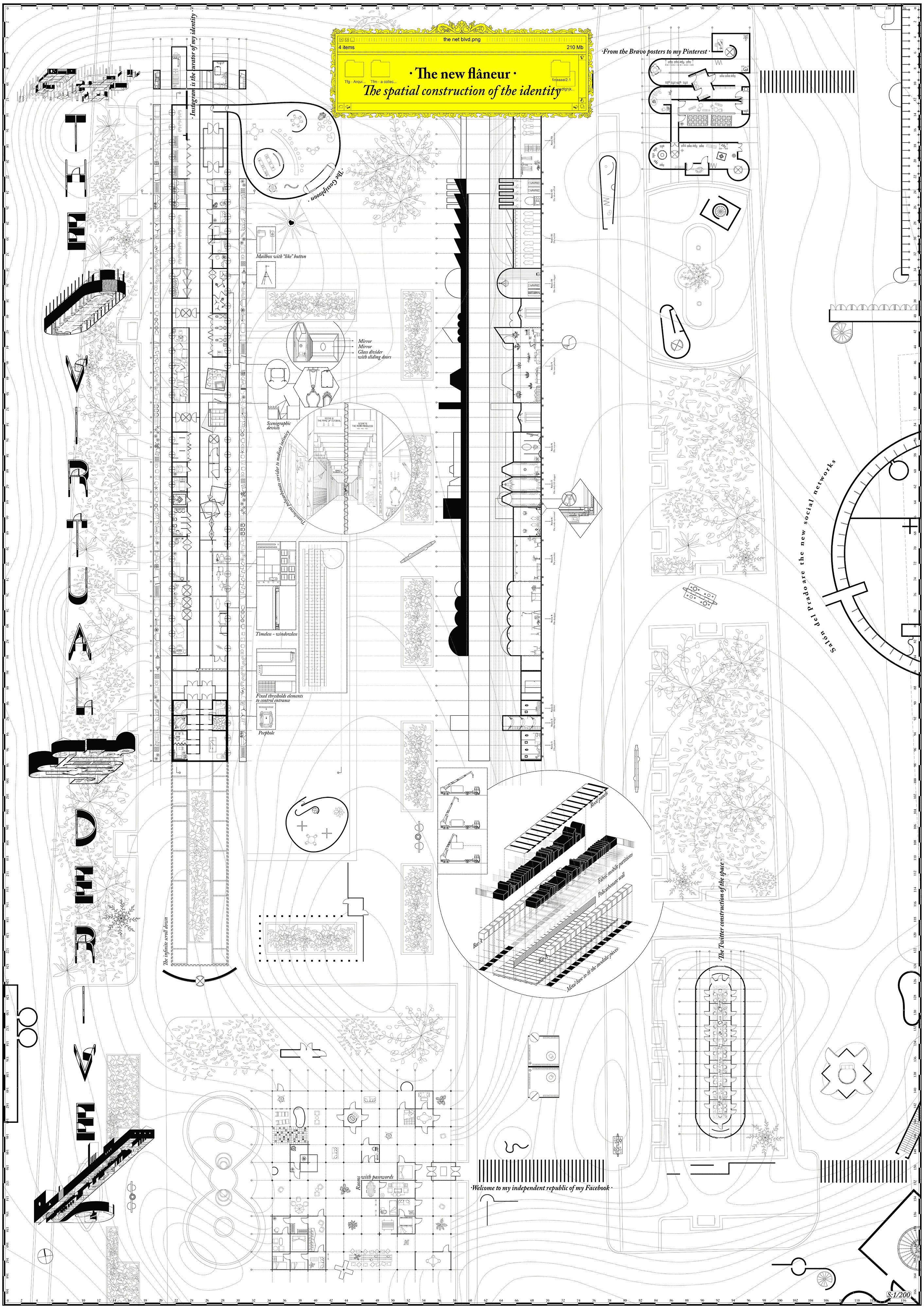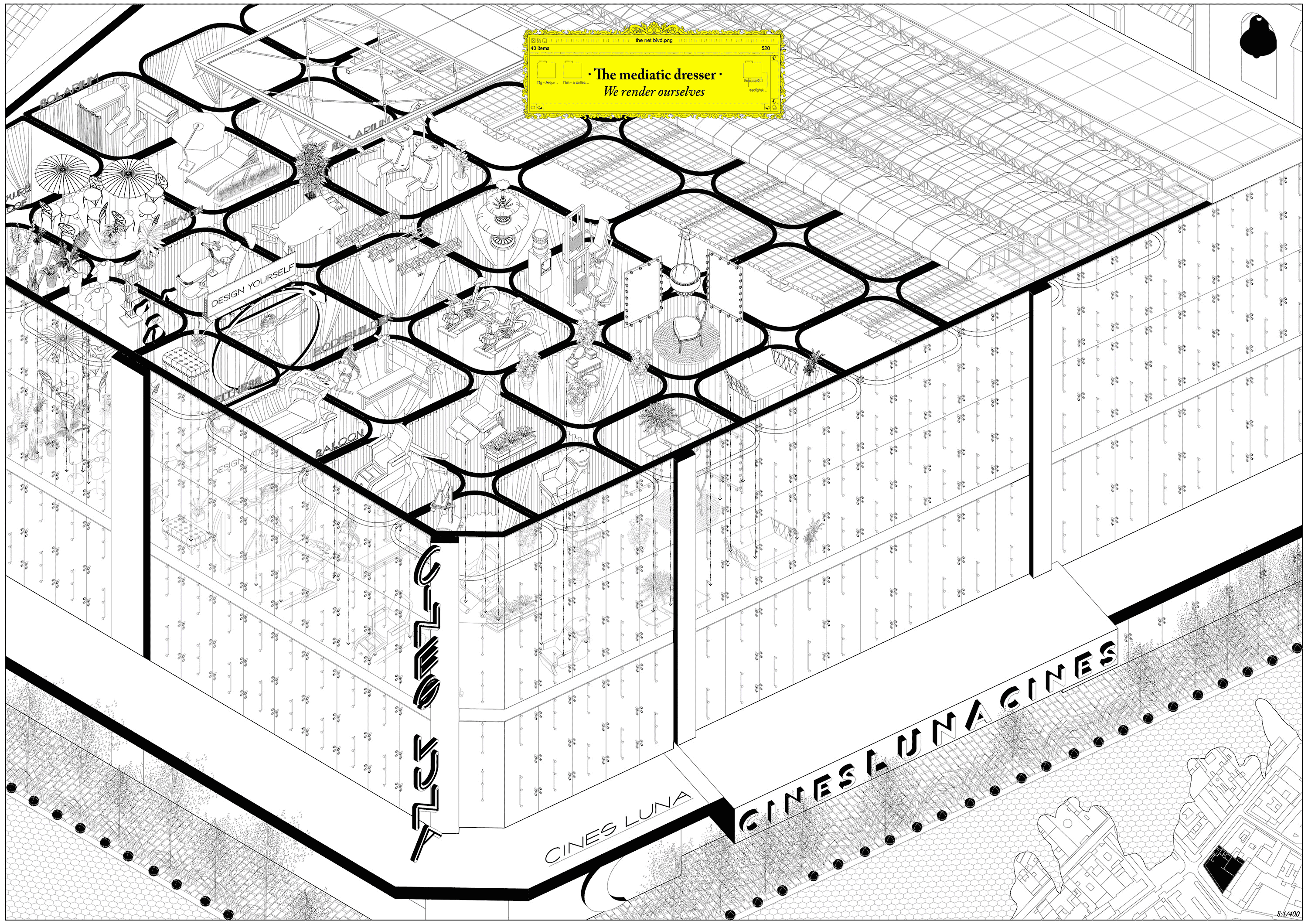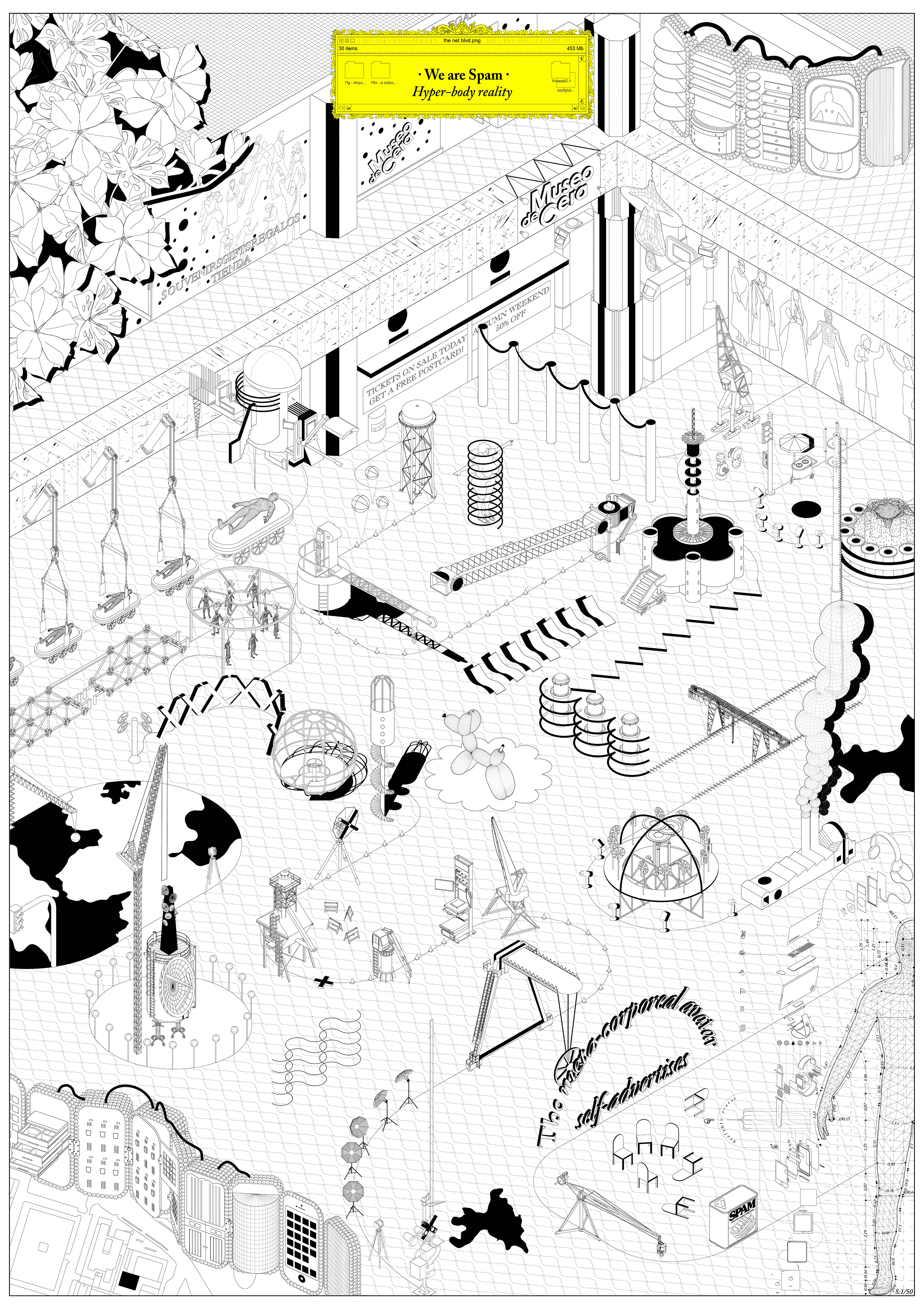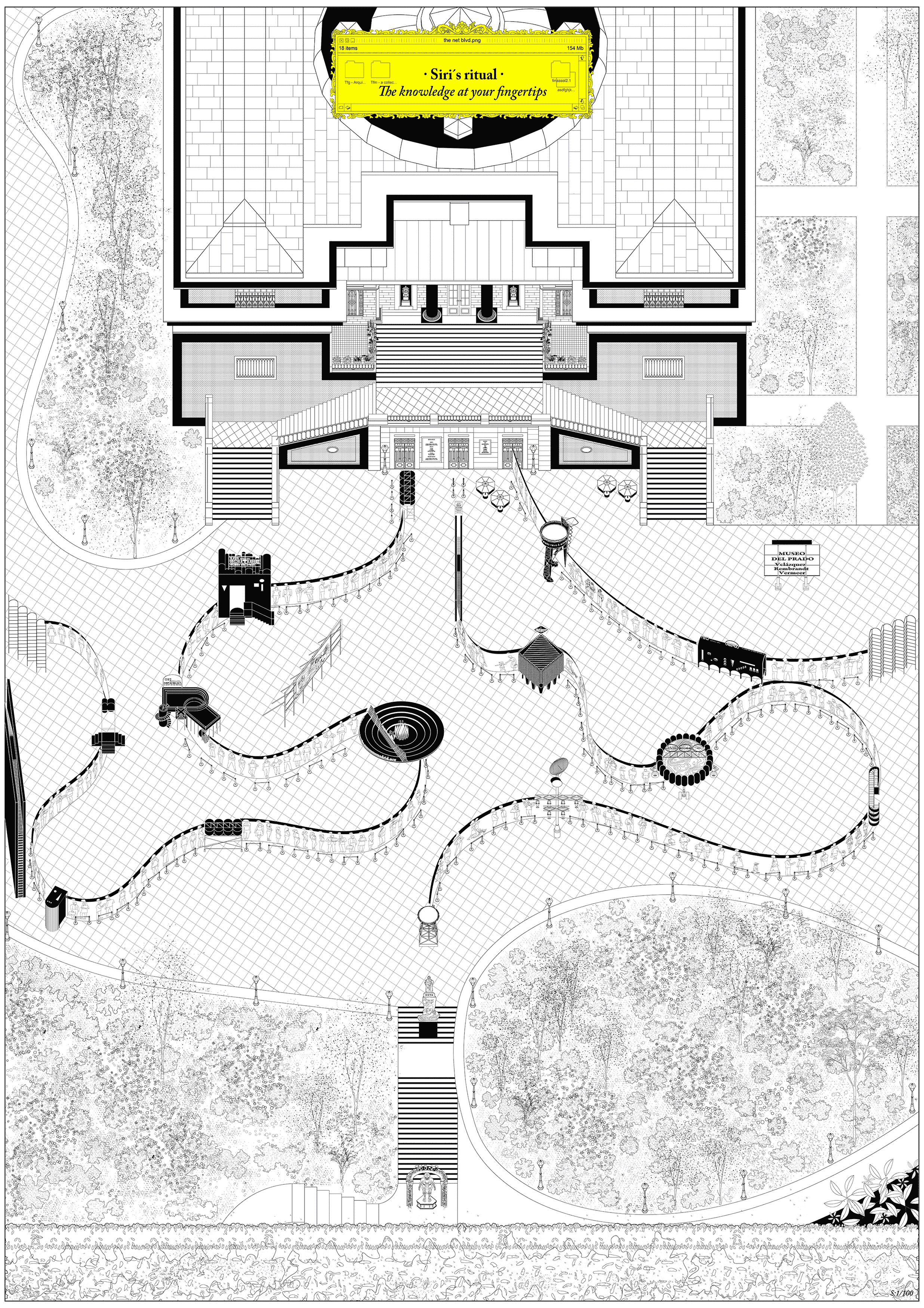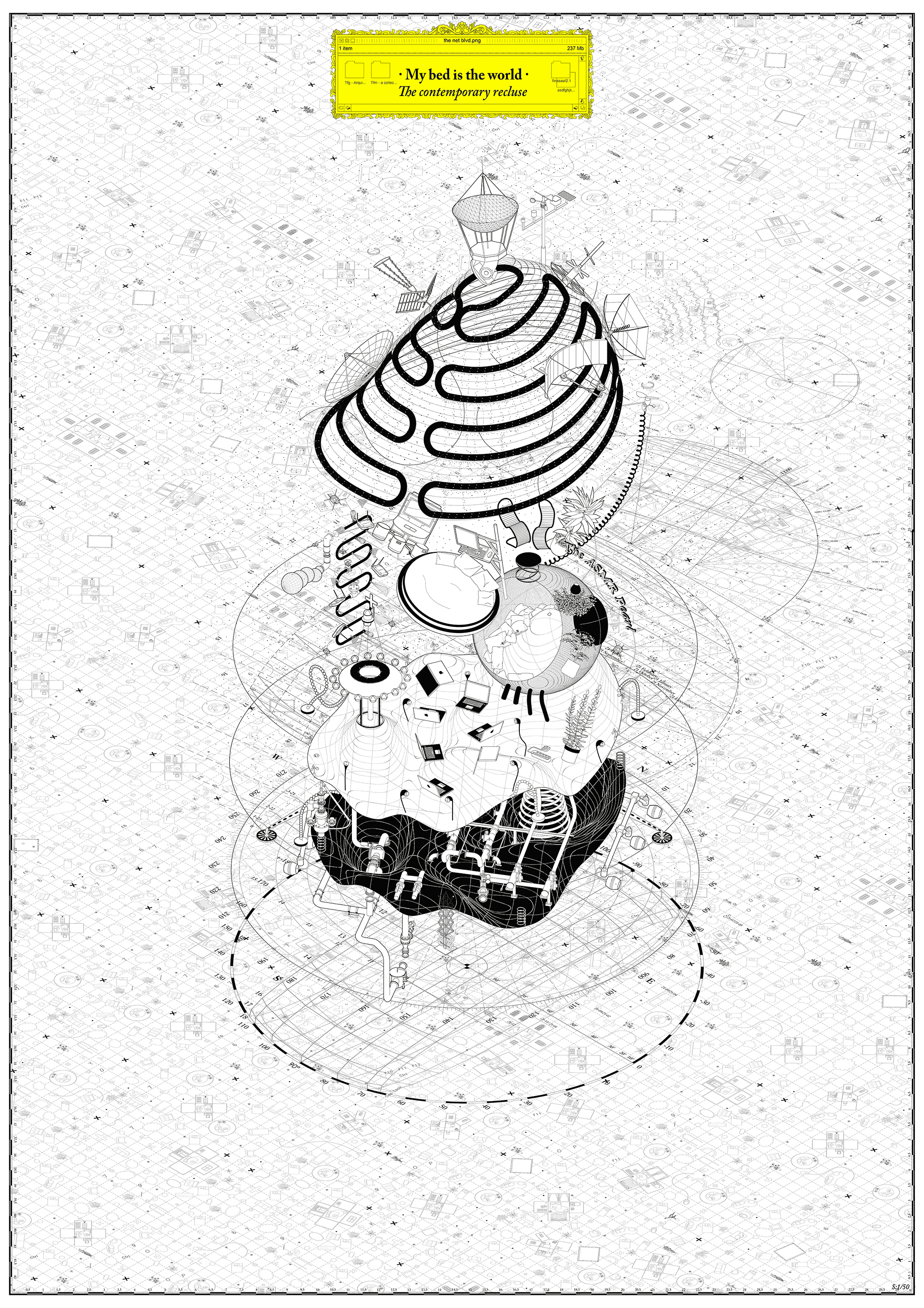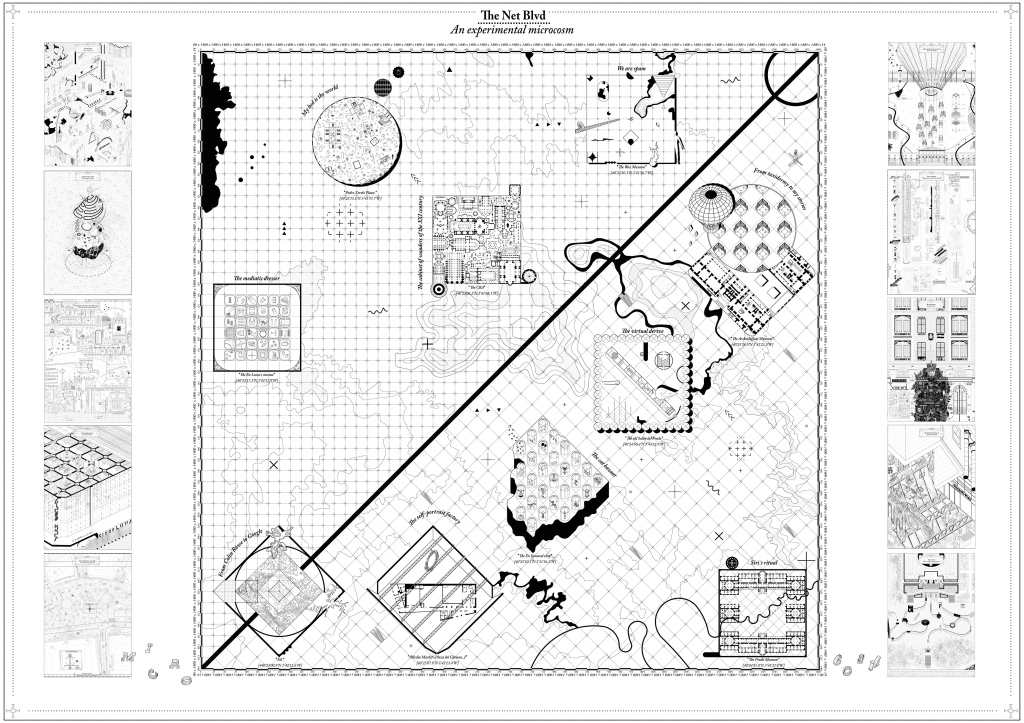
The Net Blvd
– Dana Barale Burdman
+
Please click on the images below to explore them in higher resolution

The Net Blvd examines a collection of situations that happen in the digital era. These situations imply that cultural production happens on digital platforms, structuring our collective memory. On these platforms, which go beyond physical limits, intangible contents suggest a new form of production and transmission of culture. Led by digital networks and new technologies, these platforms are transforming the way in which the world is comprehended and understood, making us reflect on the categories in which we experience reality today. Revealing these conditions leads to the introduction of new narratives and to new architectural configurations. Therefore, an imaginary landscape is proposed, which contains the detection of different scenarios of encounter between the physical and the virtual. It comprises a collection of fragments made up of a succession of different situations that conform a laboratory of hypothesis; an experimental microcosm, containing an inventory of ten interventions in ten specific locations in the city of Madrid. This new ecosystem formulates new fields in order to understand the complex reality of our context, in which dichotomies of realities can coexist, to form a methodological guide for the redescription of the city.

Image 1. Cabinet of Wonders of the XXI Century | From collectionism to hyperarchivism. Source: Author.
The Cabinet of Wonders of the XXI Century
From collectionism to hyperarchivism
The first cabinets, where exotic objects were found, collected, and exhibited from different parts of the planet, appeared in the XVI century. Collecting is a tool that allows one to sort and catalogue the objects that contain our desires, but nowadays it happens in different ways. We are constant collectors of an infinite and saturated flow of information. Due to the increasing incorporation of technology in our everyday lives, registration of objects is no longer reserved for the extraordinary. Images are the object of consumption of our collections. What are the effects of materiality transformations on the ways of collecting? Social networks are the new iconic repositories that order and categorize the world.
The Virtual Derive
The new flâneur
Within the virtual, each element of the physical realm can appear in different ways. Spaces are multiplied and experienced online. Social networks reshape and redesign the physical space in which we move, changing our relationship with everything that surrounds us. We curate our identities through this subjective construction of spaces.
The Self-portrait Factory
Broadcast of the self
Social networks are the new museum space. The body becomes a ready made artifact. The individual becomes an image, exposing their subjectivity: perpetually self-collecting, self-designing, self-advertising.
The Mediatic Dresser
We render ourselves
This speculation reinterprets the filters of the social networks through which we reform our bodies, we render ourselves, and we self-design, exposing our ideal image on digital storefronts.
We are Spam
The hyper-body reality
The commercial production of the ideal image occurs as a gesture of self-merchandising, where every public person is also a commodity. A self-image is released every day through the ideal configuration of the self. We identify ourselves with avatars that represent us in the virtual world, and allow us to display various ways of being ourselves through multiple identities. Avatars are our duplicated projection. A hyper-real body that, like Spam—that canned synthetic meat, that later gave its name to unwanted emails—serves to define us from the hybrid. The meta-corporeal and eternal avatar self-advertises.
The Cat Bazaar
The fake memory
The authentic has been replaced by the copy: souvenirs that stigmatize, falsify, represent, impersonalize and idealize the memory.
How is the current imaginary constituted?
A memory is no longer formalized into physical singularities, but has been replaced by their virtual representation.
The intention is to materialize and collect all the souvenirs found in the city, in addition to digital ready mades, composing a monument of monuments.
From Taxidermy to my Stories
The real in real time
The culture of the archive is produced by memory and destined to remain eternal, but currently, culture is based on the mutable and unstable process: the virtual consists of artificial representations and simulations of the real, in real time. The digital medium has relegated the values of materiality and historical awareness to diffusion, immediacy and connection. The self lacks the experience of temporal continuity, fragmenting time into a series of perpetual presents, like stories. An instant succession of events are reproduced as a continuous and transitory present, that expires every 24 hours.
Siri’s Ritual
The knowledge at your fingertips
Old collections were instruments for encyclopaedic knowledge, which allowed the order and classification of the understanding of the world. How is knowledge established today? If previously, a few people selected what needs to be known, today, they have increased the scale of people who have access to knowledge selection. While museums dissect and freeze their contents, the Internet is constantly changing, allowing access to information immediately, as soon as it is produced. Dictionaries are replaced by new digital tools. They are the new knowledge directories.
My Bed is the World
The contemporary recluse
The degree of intimacy in the traditional space and the online realm has been reversed. Traditionally private spaces are now new media scenarios. How is intimacy to be understood in the virtual environment? In this media house, the bedroom becomes the contemporary territory of digital exploration. The bed is the physical-virtual link. The bed is not so much a place to rest, but the place from where we act and interact. The bed defies the limits of public and private. The bed is a new refuge for the contemporary recluse, a hermetic and public physical-virtual portal: the minimum module for the virtual nomad.
From Colin Rowe to Google
Surveillance image of the self
The subject is modelled, registered and tracked by the digital panoptic. Surveillance devices infiltrate our contemporary environment, having the ability to capture, model and control us. The daily landscape is monitored and recorded by urban control systems. The digital representation of space replaces physical space. That is, through tools such as Google Streetview and surveillance cameras we can remap the physical context in which we are located. This overlap in the landscape multiplies the ways we perceive reality.
Dana Barale Burdman is an Architect from Madrid. She has complemented her studies with two international stays at the University of Bath and at TU Delft. She has gained professional experience in working in Brussels, Rotterdam and Madrid. She currently teaches the module Audiovisual Project as part of the Masters of Communication in Architecture at the Polytechnic University of Madrid. When developing projects, Dana positions herself in a framework that operates from multidisciplinary exploration through design, research and criticism, in the encounter between architecture, contemporary culture production and media studies. Some of her projects have been showcased as part of the Venice Architecture Biennale 2018 in the virtual Spanish Pavilion, and she has been selected to exhibit at Seoul Biennale of Architecture and Urbanism 2021. She was nominated for the RIBA President’s Medals Awards in 2020 and her work has been recognized with Archdaily’s award of Best Final Projects from Latin America and Spain 2021.
Volume 4, no. 2 Summer 2021

